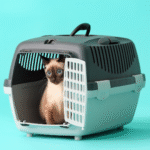By the time a pet reaches the end of their life, they’ve often become more than just an animal companion. They’re part of our daily rhythm—woven into routines, rituals, and moments that feel sacred only in their absence. Their loss is felt not just as emotional pain but as a rupture in the fabric of everyday life.
Yet, in many communities, there are few formal ways to acknowledge that grief. Human death is marked with ceremonies, obituaries, and time away from work. Pet loss, by contrast, is often met with silence. Many grievers hear well-meaning phrases like, “You just need a few days,” or “You can always get another one.” The lack of recognition can intensify the emotional toll, leaving people to process profound loss in isolation.
This is where pet loss memorialization plays a powerful role—not as a replacement for grief, but as a companion to it.
A Shift Toward Recognition
In recent years, there has been a growing shift in how society views pet loss. More people are looking for ways to honour the lives of their animals with the same depth and care offered to human loved ones. This shift isn’t frivolous—it reflects a cultural recognition that the bonds between humans and animals are real, complex, and deserving of ritual.
Pet memorialization can take many forms: a private altar in the home, a tree planted in their memory, a commissioned piece of art, or even a community gathering. What matters most isn’t the form itself, but the space it creates for reflection, acknowledgement, and healing.
The Importance of Tangible Rituals
Tangible rituals help ground the grieving process. While grief is largely invisible, ritual provides something physical and concrete to hold onto. When someone sets up a corner in their home with their pet’s photo, leash, or favourite toy, they’re not clinging to the past—they’re engaging with it, honouring the relationship, and making meaning out of loss.
The act of anchoring grief in memorialization can be immensely helpful. It allows the pet parent to stay connected to their beloved companion in a way that feels tangible and healing. It creates a safe space to visit and helps keep their spirit alive.

Making Space for Ongoing Grief
One of the most misunderstood aspects of pet loss is its timeline. Unlike human death, which may come with formal grieving periods or community rituals, pet loss rarely includes clear milestones. This lack of structure can make grief feel endless and ambiguous.
Memorialization doesn’t solve this, but it helps. It offers a starting point. It says, Begin here. It also reminds the griever that love doesn’t end with death—and therefore, neither must the connection. Some light a candle on the anniversary of a pet’s passing. Others keep a journal addressed to their pet or hang their tag by the door. These quiet acts provide continuity and dignity to a relationship that continues emotionally, even if not physically.
Grief, Visibility, and Validation
A common thread among those who choose to memorialize their pets is the desire for validation—not necessarily from others, but from within. In cultures where grief is expected to be private and short-lived, creating space to remember a pet publicly can feel radical—and necessary.
For those in single-person households or the elderly, pets often serve as chosen family. Their loss can leave an overwhelming void. For these groups especially, memorials aren’t just helpful—they are vital.
Public awareness around pet loss and grief is beginning to shift. Veterinary clinics, workplaces, and even schools are starting to recognize its psychological impact. Memorial art, community rituals, and online grief counselling sessions are beginning to lead the way.

How to Begin Memorializing
If you’re navigating pet loss and unsure where to start, memorialization doesn’t have to be expensive or elaborate. Gentle entry points include:
- Creating a photo altar with your pet’s image, a candle, or a small item they loved.
- Writing a letter to your pet expressing what they meant to you.
- Planting something—like a flower, tree, or garden—in their honour.
- Commissioning a keepsake from a local artist, even something simple. (For large-scale commissions, visit downtoearthmosaics.com.)
There’s no right or wrong way to memorialize. The goal isn’t closure—it’s connection.
Making Grief Visible
To memorialize a pet is to affirm that their life had value. It’s to declare, even softly, that grief deserves space—and that love, especially the quiet, unconditional kind shared with our pets—is worthy of a legacy.
It invites people to pause, to acknowledge, and to name something real. In doing so, it becomes a small but vital act of resistance against a culture that too often urges people to move on from pet loss before they’re ready.
It’s not about staying stuck in grief. It’s about allowing grief to move, to evolve, to be seen. In many cases, memorializing a pet becomes a lifelong practice. Our pets love without condition and often leave without warning. That kind of presence deserves to be honoured when it’s gone.
As more people begin to honour that legacy, pet memorialization is no longer a niche practice. It’s a movement toward visible, supported grief. It’s a way of saying:
“You mattered. Still do. And always will.”
Koryn Greenspan is a professional Certified Pet Loss Bereavement Specialist, Professional Dog and Puppy Trainer and a passionate advocate for pet wellness and holistic pet care.
As the founder of The Parted Paw, one of the first pet loss bereavement support services in the country, she is committed to raising awareness about pet loss as well disenfranchised grief and helping workplaces foster empathy and understanding for grieving employees who are anticipating or currently grieving the loss of a beloved pet.
More information about The Parted Paw and Koryn can be seen at www.thepartedpaw.com or on LinkedIn at www.linkedin.com/in/koryn Email: koryn@thepartedpaw.com


Read more articles by Koryn:
Disenfranchised Grief: Have You Experienced It?
Managing Anticipatory Grief & Embracing the Unseen
Learning About Pet Loss and Ways to Cope







